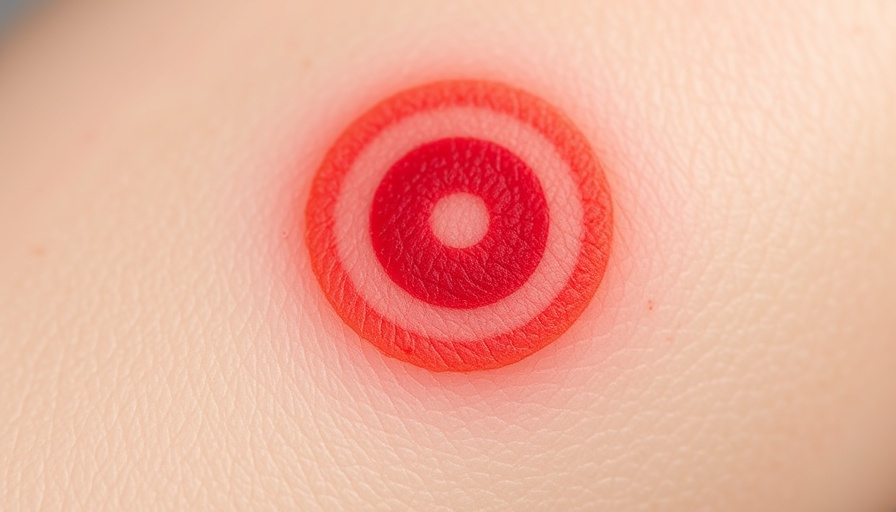
Understanding Lyme Disease: Key Signs to Watch
As tick season escalates across the United States, particularly in Louisiana, awareness of Lyme disease becomes paramount, especially for those over 55. Lyme disease, a potentially serious infection transmitted by ticks, can be detected early if one knows the signs. Symptoms typically include fatigue, joint pain, headaches, and skin rashes. In many cases, an early indicator is a characteristic rash known as erythema migrans, resembling a 'bull's-eye' pattern. Detecting these symptoms promptly can lead to more effective treatment and better outcomes.
The Riskiest Areas This Tick Season
This summer, Louisiana has experienced heightened tick activity due to warm, humid conditions which are perfect for tick breeding. Locations such as local parks, wooded areas, and even backyards present elevated risks. Keeping an eye on tick reports from health officials can give valuable insights into where exposure is more likely to occur, allowing residents to adopt preventive measures more readily.
Preventive Measures: Protect Yourself from Ticks
For those spending time outdoors, especially in heavily wooded or grassy areas, preventive steps are crucial. Engage in proactive measures like wearing long sleeves, using tick repellent containing DEET, and performing daily tick checks after outdoor activities. If you find a tick on your skin, remove it promptly using tweezers, grasping it close to the skin's surface, and pulling straight out. Furthermore, keeping grass trimmed and removing leaf litter can also lower the risk significantly in residential areas.
Beyond the Physical: Emotional Impact of Lyme Disease
The emotional toll of chronic Lyme disease can be significant. Many patients report feelings of isolation and frustration, which can be heightened by misdiagnoses and prolonged symptoms. Acknowledging the psychological aspects, such as anxiety and depression stemming from chronic pain and uncertainty about recovery, is essential. Resources such as support groups can help individuals and their families feel less isolated and provide collective strength in managing the disease.
Expert Insights: What Health Professionals are Saying
Experts like Dr. Marc Siegel emphasize the importance of education regarding tick-borne diseases, especially in states with increasing incidence rates. They advocate for public health initiatives that inform communities about the dangers of ticks, especially for demographics like those over 55, who may be more vulnerable to complications. Engaging in regular health reviews and discussions about outdoor activities with healthcare providers can heighten awareness and aid in the prevention of Lyme disease.
Long-term Outlook: What Does the Future Hold?
Looking ahead, understanding Lyme disease involves not just reactionary measures but also proactive healthcare strategies that prioritize education, community engagement, and ongoing research. As climate change influences tick migration patterns, it is crucial for residents in Louisiana to remain vigilant and informed about potential health risks. Future advancements in prevention and treatment are also promising, with ongoing research indicating a focus on more effective vaccines and therapies.
Conclusion: Staying Informed and Taking Action
As we delve into tick season, the knowledge about Lyme disease and its signs becomes more critical for our community's health. By taking preventive measures, understanding the risks, and supporting one another emotionally, we can combat this health concern together. If you suspect exposure or experience symptoms, consult a healthcare provider promptly. Remember, staying informed is key to safeguarding your health during tick season.
 Add Row
Add Row  Add
Add 



Write A Comment